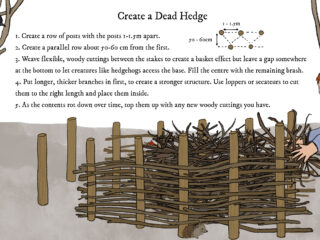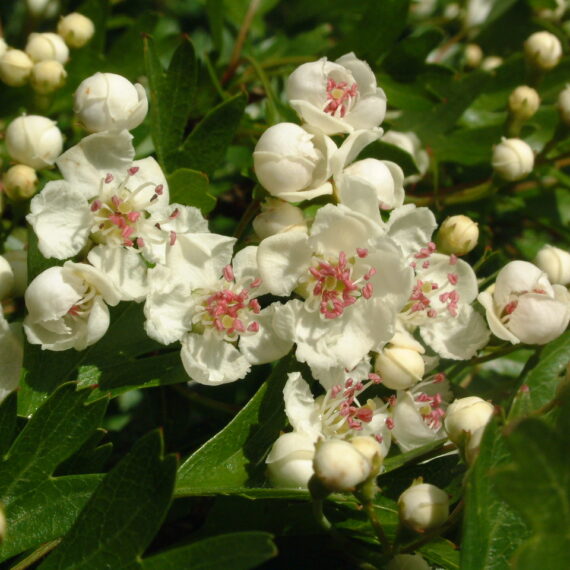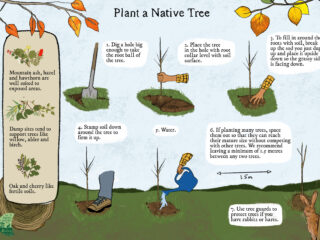Native trees and shrubs benefit wildlife greatly by providing food sources, shelter and the individual trees are mini habitats in their own right.
What the landowner will need to commit to
- A Suitable Site: Up to 10 metres length of eligible* land to accommodate hedging trees for wildlife.
- Willingness to plant and protect the wildlife hedge habitat: A willingness to plant and, if necessary, fence the trees within one week of receiving the trees in line with best practice guidance provided by The Hare’s Corner. (Tree distribution day is usually held in December or January).
- Long term management: Your assurance that this site will be actively maintained for the next 3 years – maintanance will include keeping competing vegetation down and protecting the trees from any grazers.
- Progress update: Your willingness to provide feedback and progress update on the trees if and when requested by The Hare’s Corner team.
- Signage Your agreement to erect a small, simple branded sign at the site (only applicable to a public site)
- Data: Your agreement that your anonymised data (location of your trees and images) will be used by The Hare’s Corner project for its communications and reporting purposes.
*An eligible site for creating a new hedgerow would be edges of gardens, fields, or anywhere you would like to create a new boundary or windbreak. A new hedgerow that connects preexisting hedgerows and other natural habitats will increase its biodiversity value. Avoid planting in areas already rich in biodiversity e.g. species-rich wildflower meadow, or areas within a protected or designated habitat. Avoid planting in waterlogged soil (unless the chosen tree can cope with these conditions e.g. Willows or Alder).
What The Hare’s Corner team will commit to
- Organising the necessary training and guidance. A training webinar and Q&A session is held few weeks before the tree distribution day (usually November). Guidance material is also provided on the tree-pick up day.
- Supplying 50 or more native trees of 5-6 different species that are most suitable for a wildlife hedge.
- Providing ‘The Hare’s Corner’ branded signage for your site if applicable.
Practical Tips

Create a Dead Hedge
Dead wood is a whole ecosystem in itself, whether in the form of dead-standing trees, dropped branches, log or brash piles, and dead hedges. Spiders, slugs, snails, worms, beetles, springtails, flies and frogs will all use dead wood for shelter, with the invertebrates forming a key part of the food chain that will support amphibians, reptiles, birds and mammals.

